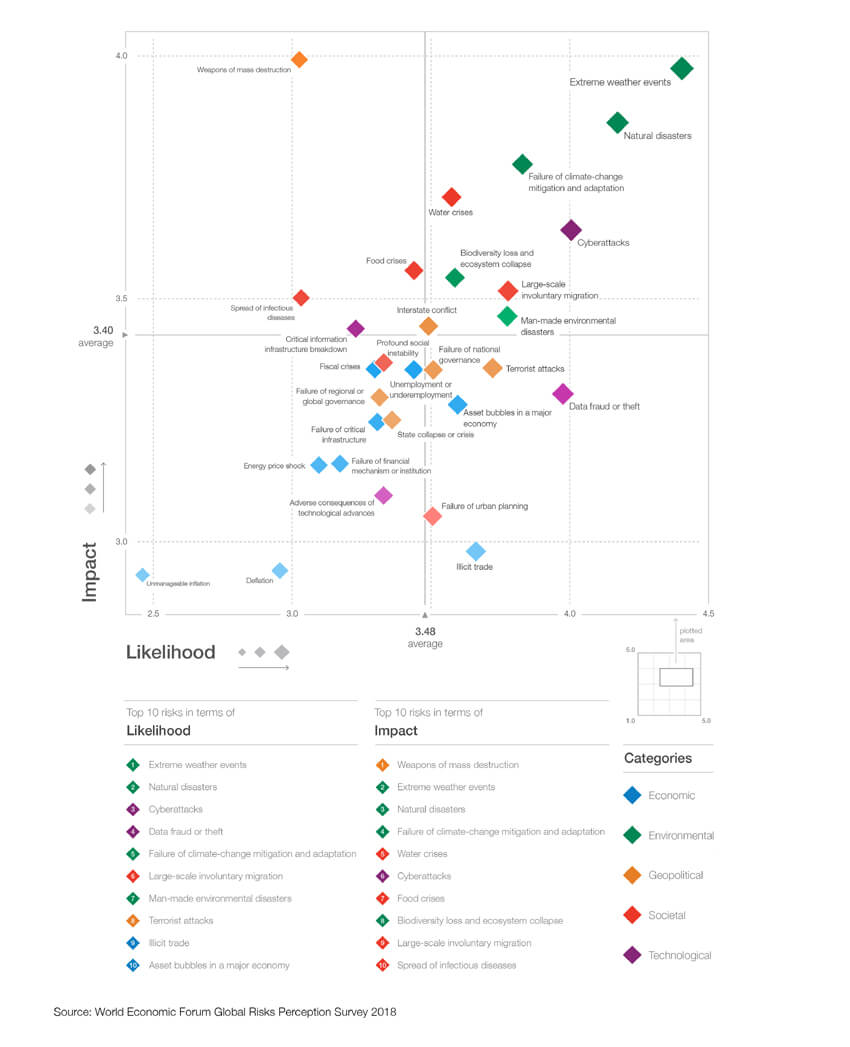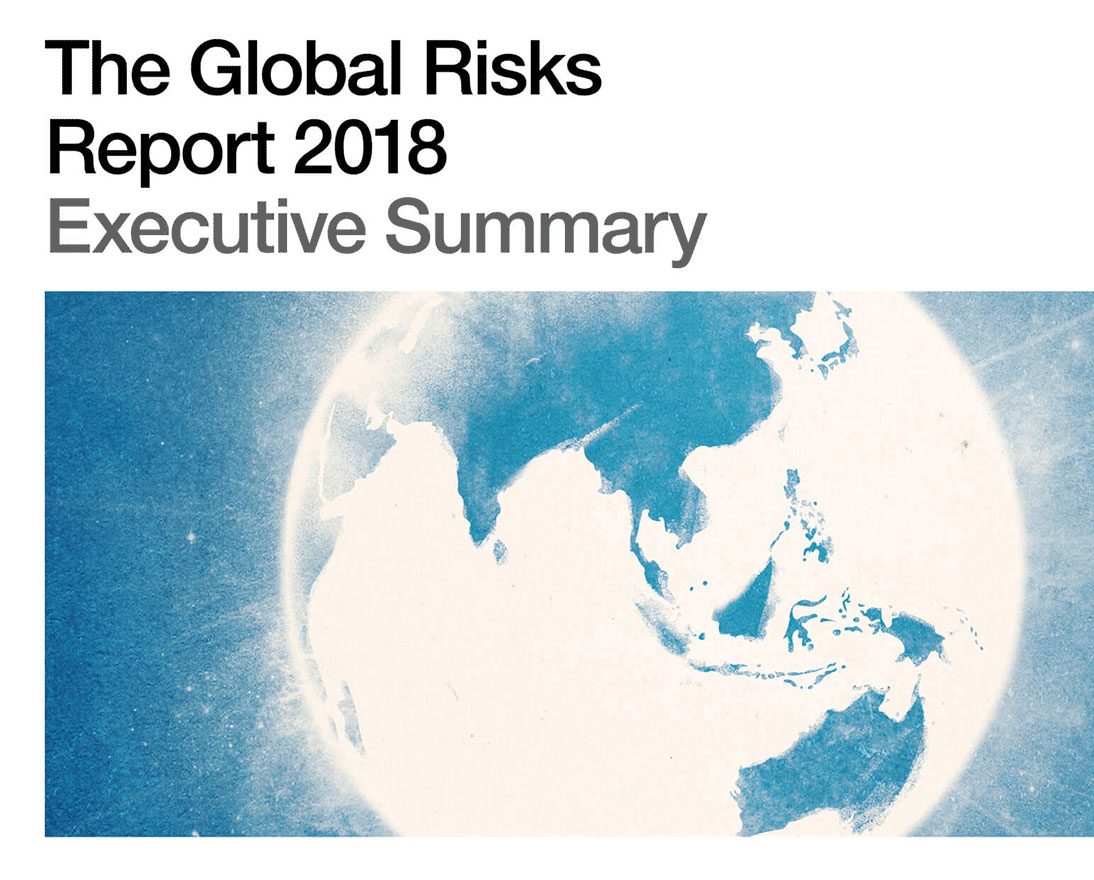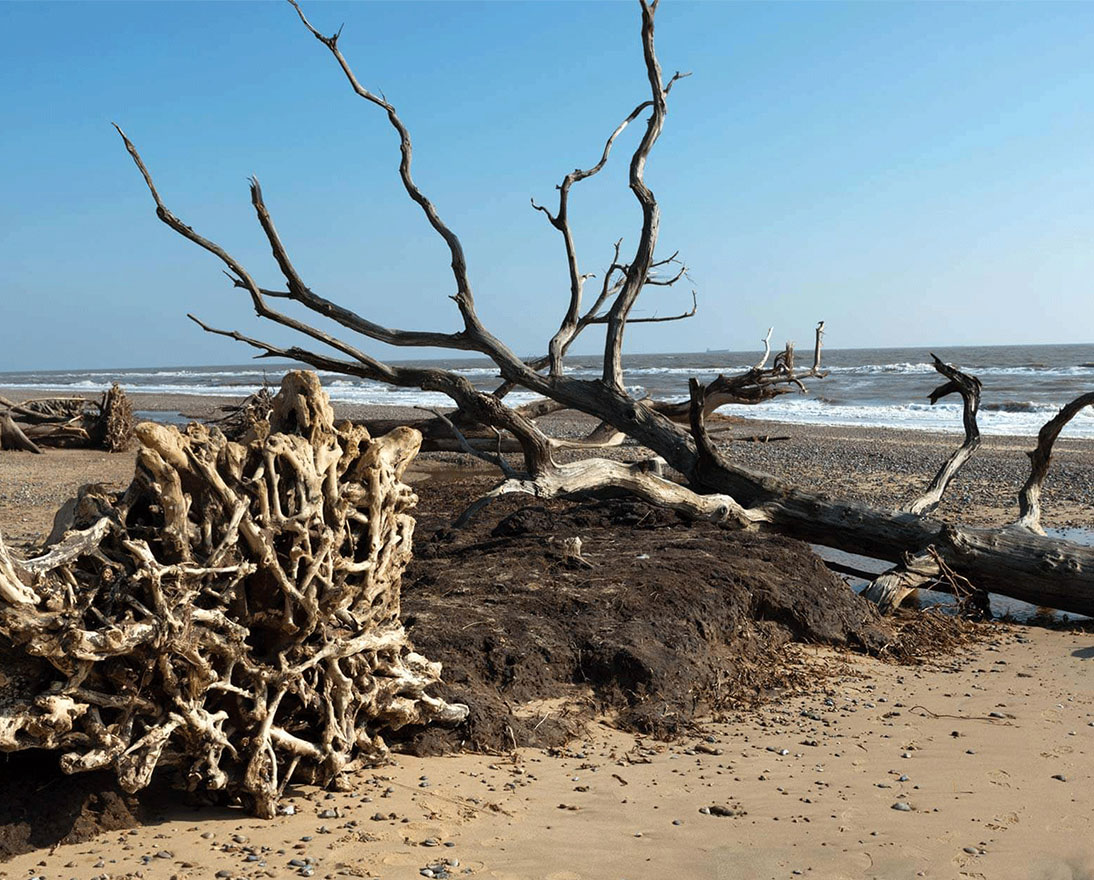The global risks landscape 2018
Global risksReportJanuary 17, 20184 min read
One risk category tops the chart this year – environmental-related risks ranked again among the top global risks by likelihood and impact. Top 10 global risks revealed.
As in previous years, the 13th edition of The Global Risks Report is based on the annual Global Risks Perception Survey (GRPS)1, completed by 900 members of the World Economic Forum’s global multi-stakeholder community. Respondents are drawn from business, academia, civil society and the public.
The survey asked respondents to consider 30 global risks categorized as societal, technological, economic, environmental or geopolitical, over a 10-year time horizon2. For each risk, they were asked about the perceived likelihood of the risk occurring globally within the next 10 years and the impact if it does. 13 global trends are also considered by the survey.

Key findings from the GRPS:
- The survey finds overall that environmental and technological risks continue to be on the rise, geopolitical and societal risks are overall somewhat stable but remain high while economic risks continue to be perceived as low both in terms of likelihood and impact.
- Environment-related risks again stand out in this year’s global risk landscape with every risk in the category lying in the higher-impact, higher-likelihood quadrant. For the second & consecutive time in thirteen years, the top global risks in terms of likelihood is extreme weather events.
- Global risks that remain serious because of their combined impact and likelihood involve extreme weather events, major natural catastrophes, failure of climate change adaptation, large scale cyber-attacks and large scale involuntary migration.
- On the technological side, while in previous years respondents to the GRPS have tended to be optimistic about technological risks, this year’s concerns jump: for the first time, cyber attacks rank 3rd global risks both in terms of likelihood and impact, while massive incidents of data fraud and theft rank as 4th global risks in terms of likelihood. These are also amplified by rising cyber dependency.
- Economic risks continue to be perceived as low, with a reduced prominence years after years, raising growing concerns on a potential complacency with economic risks (latest examples of complacency with economic risks all preceded a major financial crises). We must remain on alert and leave no room for complacency.
- Perhaps surprisingly, Geopolitical risks saw little development year-on-year. However, when asked about risk trajectories in 2018, there is a great level of concern: 93% of respondents expect a worsening of political and economic confrontations/frictions between major powers, nearly 80% 2018 to see an increase in the risk associated with “state-on state military conflict or incursion” and “regional conflicts involving major powers”
- New developments in the Global Risks Interconnection Map: for the first time, the most interconnected risks were “adverse consequence of technologies” and “unemployment and under-employment”, both highly connected with “profound social instability”. Second, we see an even stronger interconnectivity between “failure to climate change adaptation“, with “food and water crises”, “extreme weather events” and “large scale involuntary migration”.
1 The Global Risks Perception Survey (GRPS), discussed in the chapter “Fractures, Fears and Failures”, is the World Economic Forum’s source of original data harnessing the expertise of the Forum’s extensive network of business, government, civil society and thought leaders. The survey was conducted from 28 August to 1 November 2017 among the World Economic Forum’s multi-stakeholder communities, members of the Institute of Risk Management and the professional networks of our Advisory Board Members. The results of the GRPS are used to draw the Global Risks Landscape, Interconnections Map, and Trends Map presented, and to provide additional evidence used in The Global Risks Report.
2 Survey respondents were asked to assess the likelihood of the individual global risk on a scale of 1 to 5, 1 representing a risk that is very unlikely to happen and 5 a risk that is very likely to occur. They also assess the impact on each global risk on a scale of 1 to 5 (1: minimal impact, 2: minor impact, 3: moderate impact, 4: severe impact and 5: catastrophic impact). See Appendix B of the Report for more details.






